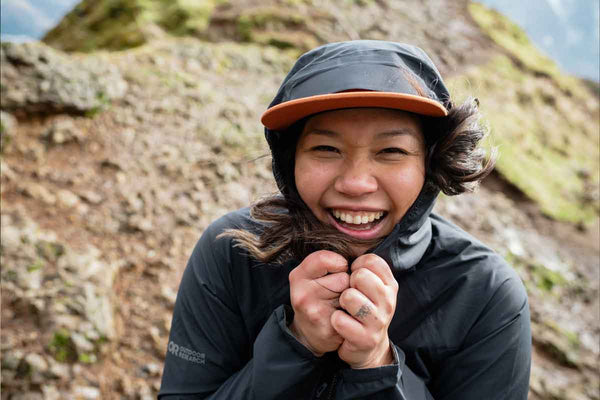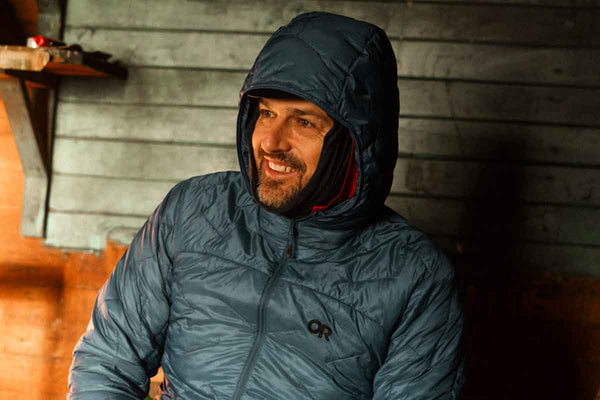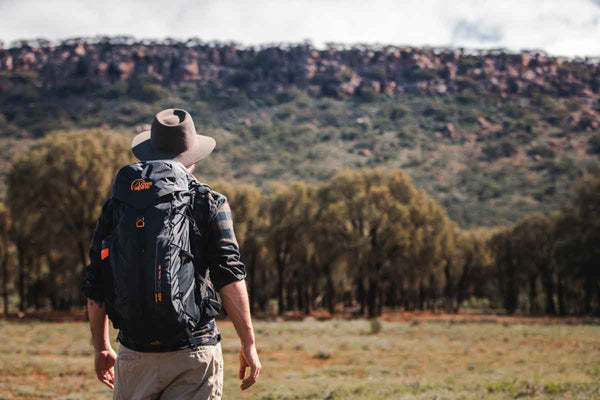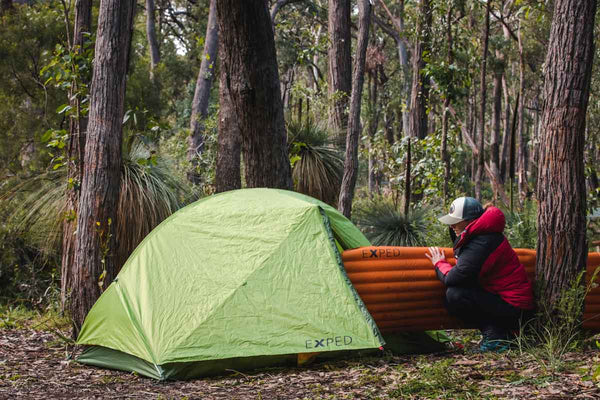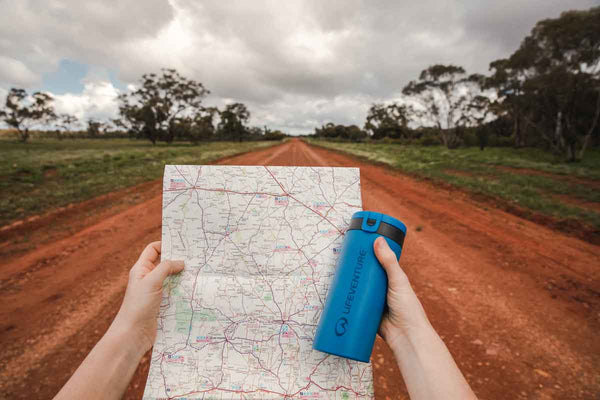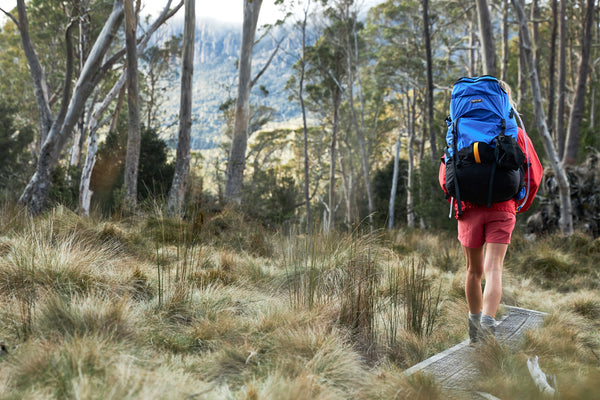
Clothing Guide
The range of clothing options for the outdoor and travel market is mind-boggling. However, it can be made easy if you consider garments as part of a ‘Layering System’. Base (next to skin) layers deal with moisture and/or thermal needs. Mid layers can provide insulation, wind-proofness, rugged protection, in fact anything that your pursuit or activity requires. Outer shells provide the major weather barrier. All layers need to share certain similar properties, breathability rates, articulation and fit. This page provides a detailed overview of layering theory.
Clothing & Climate
Tropical Gear
Clothing should be light weight, highly breathable, cover all limbs and provide sun protection. It also makes sense to choose materials that have been treated with antibacterial and insect repellent agents. All clothing should be light and compact, and fast drying too. High wicking materials should be chosen to prevent excessive cooling when wet.
Desert Gear
Daytime clothing should be light weight, highly breathable, cover all limbs and provide sun protection. Wind blown sand and dust can be a nuisance, which will both exacerbate the extremes of temperatures and irritate your skin and senses. As such, good eye protection is essential, as is a long scarf to wrap around your head when the wind picksup. At night, as the temperature plummets you may need an insulation layer to keep warm.
Temperate Gear
Due to the seasonality and variability of temperate climates clothing layers must, above all, be versatile. Base layers of different weights that both wick and insulate provide an excellent next-to-skin foundation. Mid layers should ideally incorporate a range of fabric features, for example warmth, windproofness & water resistency as required. When purchasing a shell layer it is always wise to consider a ‘worst-case-scenario’ within your preferred season for safety and comfort.
Alpine Gear
Weather-proofness, breathability, comfort and articulation, durability and weight are all equally important characteristics for the extremes encountered in the mountains. Accordingly, alpine clothing is some of the most specialised gear that you can find on the market.
Polar Gear
Travel to the high Arctic and Antarctica is rigidly controlled to minimise negative impacts on the environment. Tours normally use heated ice-breakers so that exposure to the elements is minimised. Clothing should therefore centre on warm and weather-proof gear for day trips rather than extensive wardrobes.
Layering Theory
Next-to-Skin Layers
Firstly, your base (next to skin) layer needs to reflect your perspiration rate and the ambient air temperature. Base layers specialise at wicking moisture away from the surface of the skin, thus preventing excessive cooling which saps valuable energy. That is, unless you are in a hot environment when the cooling effect of evaporation is a bonus. Base layers vary in thickness to reflect your desired insulation level, thin layers are ideal for tropical, desert, and warm temperate climates. Thicker base layers are normally used in alpine and polar regions where it remains cold all day long.
Base layers must wick moisture away from your skin as rapidly as possible to prevent excessive cooling at times of rest. Having moisture on your skin will waste body heat through conduction, which when unchecked can lead to hypothermia. It is vital that you find the right balance of material thickness and construction to suit your bodies needs.
Synthetic fibres used in high performance materials like Powerdry and First Layer provide stretchiness, warmth, breathability, high wicking ability and are light weight. These fabrics are ideal for moderate to high activities in a very broad range of climates and are all fast drying when laundered.
Why Wool?
Wool fibres have a water-absorbing interior (hydrophilic) and a fine wax-like exterior membrane which is water-repelling (hydrophobic). Microscopic pores in the membrane allow water vapour to pass through in to the hydrophilic interior, thus wicking moisture away from your skin (wool can absorb 35% of it’s own weight in water before feeling wet). The exterior membrane prevents the fabric from feeling wet-through, but it will require airing to dry completely. Wool’s naturally crimped fibres trap warm air and provide stretchiness, they also prevent odour from building up to unpleasant levels. 18.5 micron merino wool is now recognised as an excellent low to moderate activity level base layer by a broad range of outdoor enthusiasts - why not try and test it for yourself?
Head, Hands & Feet
In warmer climates, a light scarf is recommended for wind and sun protection - particularly in arid and alpine regions. Adequate eye protection (check how high you’ll need the UV protection) is always a must, and don’t forget a broad brimmed hat for sunny days. When it gets cooler frostbite and trenchfoot become potential hazards. A thermal liner glove worn as a base layer will provide moisture control. Inner and outer glove or mitt (which are always warmer than gloves) combinations should reflect the dexterity needed for your choosen activities. A spare hat or balaclava (to prevent wind-stung cheeks) completes any pack for most eventualities.
Mid-layers
Then come your mid-layers, which reflect your range of activities and the environment in which you are doing them. For example, mid-layers in winter should place an emphasis on insulation; bikers need breathable clothing that is completely or partially windproof; and, trekkers need fast drying garments with ventilation and pockets. But be careful, there is a delicate balance between having the most flexible combination of layers and taking too much clothing. Mid layers may also have climate-protection features, for example, Soft Shell fabrics are very water resistant and windproof.
The Soft Shell concept takes the traditional fleece pile jacket, the windproof outer layer, wicking fibre technology and combines them all into one highly versatile garment. Soft Shells replace the need for multiple mid-layer options as one garment can do the work of two or three traditional garments, and the range is now large enough to suit almost any activity. An added bonus is that Soft Shells make an ideal combined shell and mid-layer garment for the more clement times of year or for trekking and travelling.
Shell Layers
Your outer shell layer is what provides guaranteed protection against rain, snow, hail and wind, as well as harnessing the warmth generated by your body. This layer needs to easily accommodate all your potential base and mid-layer combinations but not be oversized such that it will flap excessively in high wind. It should be waterproof, breathable, ventilated, durable, and compact when not being used as it may spend a lot of time being carried around in your pack. Don’t be intimidated by the jargon that manufacturers have come up with – there are 7 key features that you must look for – the rest is personal preference.
1. Weight
Expect that you be carrying your shell for most of the time, so make sure that you keep it as light and compact as possible. The best way to do this is to minimise seams, zips, and general paraphernalia. So straight away your mindset should be – is that feature really worth carrying?
2. Breathability
The effects of condensation can undo all of the work of your base and mid-layers. Make sure that the garment is breathable enough to deal with your activity level, and that you can easily ventilate it should you need to – this can be easy release cuffs to pit zips – but remember it all adds weight (and cost). A rule of thumb here is that a more breathable garment is generally more use than a more ventilated garment.
3. Hood design
Many hoods are poorly designed so check them out. If you expect to wear a hat or helmet under the hood then check it fits. Turn your head while wearing a pack to make sure the hood has enough articulation. Peaks and draw cords should ensure no flapping material causes distractions, and make sure the main zip doesn’t irritate your mouth or chin. If it folds away into the collar then make sure it does so easily and unobtrusively.
4. Compactness
Some fabrics are very bulky so try to match fabrics with your activity needs. For example light weight materials are great for day hikes or multi day treks along trails, heavy duty materials are only needed when bush-bashing or rock scrambling. Multicoloured garments and those with many pockets have many more seams and are bulkier and heavier than simpler versions. Also, try to imagine what you will want immediate access to whilst wearing the garment – a map perhaps? Or your wallet or ski-pass? Hip pockets are great for travelling but not much else.
5. Zips
Double zip covers work best whether Velcro or stud sealed, but there are some very good water-resistant zips now on lightweight garments. The zip should be two-way and a decent size so that you can easily open and close the garment with heavily gloved hands.
6. Articulation
Your shell should never restrict movement. Do up the zips, draw cords and hood, put a pack on, and check that you can still carry out the movements that you need to do. But beware, the greater the degree of articulation, the greater the number of seams – and seams reduce durability, reduce water-proofness, and add weight and cost.
7. Durability
Manufacturers frequently add fabric panels to increase the thickness, and therefore, the durability of an area on the garment. For many users these are unnecessary additions as the fabric of the main garment should reflect what you will be doing anyway.
Down & Insulating Layers
Substantial insulation layers are designed to keep you warm at high altitudes or during ‘down times’ like major rest periods, or at the beginning and end of the day. There are two major types of insulation layer – down and synthetic. Down is an unbeatable insulator as well as being light, compressible, flexible and durable. Down quality is measured in loft (the higher the loft, the higher the quality) and it is best to ignore the urban myths associated with duck verses goose downs – loft is the only measure of quality - no matter what manufacturers may claim.
Synthetic fills have an advantage of retaining some insulating qualities even while wet (and they dry faster), but they are also bulkier and heavier – a big issue when you have to carry it most of the time! In both cases (down and synthetic) the construction of the garment is an important feature. Firstly, the exterior must protect the filling and prevent warm air from escaping - this is best achieved using breathable windproof shells and tuck stitching. Secondly, baffled or triple layer construction is best to minimise cold-spots and material bulk.
On a final note, ignore specific temperature ratings for insulated clothing; your metabolism, body fat ratio, heart rate, food intake, and perspiration level will all dramatically affect your perception of cold. A good guide is that down fills of 200 to 300gm (650 or more loft) or the synthetic equivalent for altitudes under 6,000m and temperatures above -20°C - and 500gm (650 or more loft) for over 6,000m and temperatures below -20°C.
When mountaineering at high or very high altitudes (6,000 to 8,000+m) there are a number of specific features to look out for:
- Articulation in elbows and knees makes movement far easier.
- Reinforcing on hard wear areas like knees, shoulders, elbows to protect against ripping.
- Large access points to pockets that will fit down mitts.
- Waist and hem draw cords with elasticed and sealable cuffs to trap all warm air.
- Full length leg zips that permit toiletry access.
Fabric Features
Microclimate Shell layers are the barrier between the external environment and your body’s microclimate. Layering theory concentrates on getting moisture away from the surface of the skin as quickly as possible to prevent excessive cooling.
Whereas cotton clothing will create a conductive/evaporative cooling effect while being worn which may make you feel more comfortable in hot climates, moisture management is critical in all but desert environments and ranks equally with weather-protection priorities. Insulation needs must take into account ambient temperature and work rates. The two biggest issues for controlling your microclimate are minimising wind chill and humidity. It is essential that you choose layers with similar breathability rates to avoid condensation and it is wise to always have a wind-proof layer close to hand.
Sun Protection - Light or pale neutral tone colours are ideal to reflect sunlight – dark colours will also attract insects as they radiate more heat. Sun protection is vital as it is easy to suffer from heatstroke even if you are drinking lots of water so a broad-brimmed light weight hat is a must. Synthetic long sleeved shirts are normally SPF rated and sometimes insect–repellent - permethrin impregnation kits are also available.
Odour - Light weight synthetic fabrics do not hold odours when washed unlike cottons. However, synthetic fibres will begin to smell much faster than superfine merino wools. Some synthetics are treated with an antibacterial agent that slows odour build up, but this will not manage to duplicate the same wash-lifetime of merino wool.
Size Comparison Tables
For a note on sizing, check our Sizing Instructions Page.

